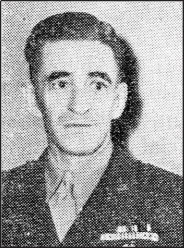- KRAMER
- GERMANY (see also List of Individuals)\
 12.12.1894 Magdeburg/D - 16.2.1957 San Francisco/USA\Hans Kramer moved from Germany to the USA in 1902 and there was naturalized in 1913. He studied at the University of Michigan from 1912 to 1913 to receive a Batchelor of Science degree form the US Military Academy in 1918. He graduated as a civil engineer from the University of Pennsylvania in 1928. He moved back to Germany as a Freeman Scholar and submitted a PhD thesis to Dresden Technical University in 1932. In parallel he pursued a military career from 1918 to finally a Brigadier General in 1942, and retired from the service in 1945. He was from 1946 a consulting engineer. Kramer was a Member of the American Society of Civil Engineers ASCE from 1930, of the US Society of Military Engineers, the International Association of Hydraulic Research IAHR and the Permanent International Association of Navigation Congresses.\Kramer is known for an outstanding PhD thesis that he conducted as a Freeman Scholar at Dresden University. His work may be considered a predecessor of the work of Albert Shields (1908-1974), another Freeman scholar who stayed at Berlin Technical University and introduced the concept of sediment entrainment in river flow. Kramer's service in the Army until retirement included a number of major engineering assignments, among them the Conchas Dam in New Mexico and work on the Panama Canal. He also served as professor of military science and tactics at the California Institute of Technology in Pasadena CA from 1920 to 1924.\Anonymous (1955). General Hans Kramer. Civil Engineering 25(9): 593. PAnonymous (1963). Kramer, Hans. Who's who in America 3: 489. Marquis: Chicago.Cattell, J. (1955). Kramer, Hans. American men of science: Physical sciences: 1077. Science Press: Lancaster PA.Kramer, H. (1930). The Istmian Canal situation. Trans. ASCE 94: 406-424.Kramer, H. (1932). Modellgeschiebe und Schleppkraft. Dissertation. Technische Hochschule: Dresden; also published as Mitteilung 9. Preussische Versuchsanstalt für Wasserbau und Schiffbau: Berlin.Kramer, H. (1934). The practical application of the Du Boys tractive-force theory. Trans. American Geophysical Union 15: 463-466.Kramer, H. (1935). Sand mixtures and sand movement in fluvial models. Trans. ASCE 100: 798-878.Kramer, H. (1945). Hydraulic model of the Mississippi. Engineering News-Record134: 766-769.
12.12.1894 Magdeburg/D - 16.2.1957 San Francisco/USA\Hans Kramer moved from Germany to the USA in 1902 and there was naturalized in 1913. He studied at the University of Michigan from 1912 to 1913 to receive a Batchelor of Science degree form the US Military Academy in 1918. He graduated as a civil engineer from the University of Pennsylvania in 1928. He moved back to Germany as a Freeman Scholar and submitted a PhD thesis to Dresden Technical University in 1932. In parallel he pursued a military career from 1918 to finally a Brigadier General in 1942, and retired from the service in 1945. He was from 1946 a consulting engineer. Kramer was a Member of the American Society of Civil Engineers ASCE from 1930, of the US Society of Military Engineers, the International Association of Hydraulic Research IAHR and the Permanent International Association of Navigation Congresses.\Kramer is known for an outstanding PhD thesis that he conducted as a Freeman Scholar at Dresden University. His work may be considered a predecessor of the work of Albert Shields (1908-1974), another Freeman scholar who stayed at Berlin Technical University and introduced the concept of sediment entrainment in river flow. Kramer's service in the Army until retirement included a number of major engineering assignments, among them the Conchas Dam in New Mexico and work on the Panama Canal. He also served as professor of military science and tactics at the California Institute of Technology in Pasadena CA from 1920 to 1924.\Anonymous (1955). General Hans Kramer. Civil Engineering 25(9): 593. PAnonymous (1963). Kramer, Hans. Who's who in America 3: 489. Marquis: Chicago.Cattell, J. (1955). Kramer, Hans. American men of science: Physical sciences: 1077. Science Press: Lancaster PA.Kramer, H. (1930). The Istmian Canal situation. Trans. ASCE 94: 406-424.Kramer, H. (1932). Modellgeschiebe und Schleppkraft. Dissertation. Technische Hochschule: Dresden; also published as Mitteilung 9. Preussische Versuchsanstalt für Wasserbau und Schiffbau: Berlin.Kramer, H. (1934). The practical application of the Du Boys tractive-force theory. Trans. American Geophysical Union 15: 463-466.Kramer, H. (1935). Sand mixtures and sand movement in fluvial models. Trans. ASCE 100: 798-878.Kramer, H. (1945). Hydraulic model of the Mississippi. Engineering News-Record134: 766-769.
Hydraulicians in Europe 1800-2000 . 2013.
